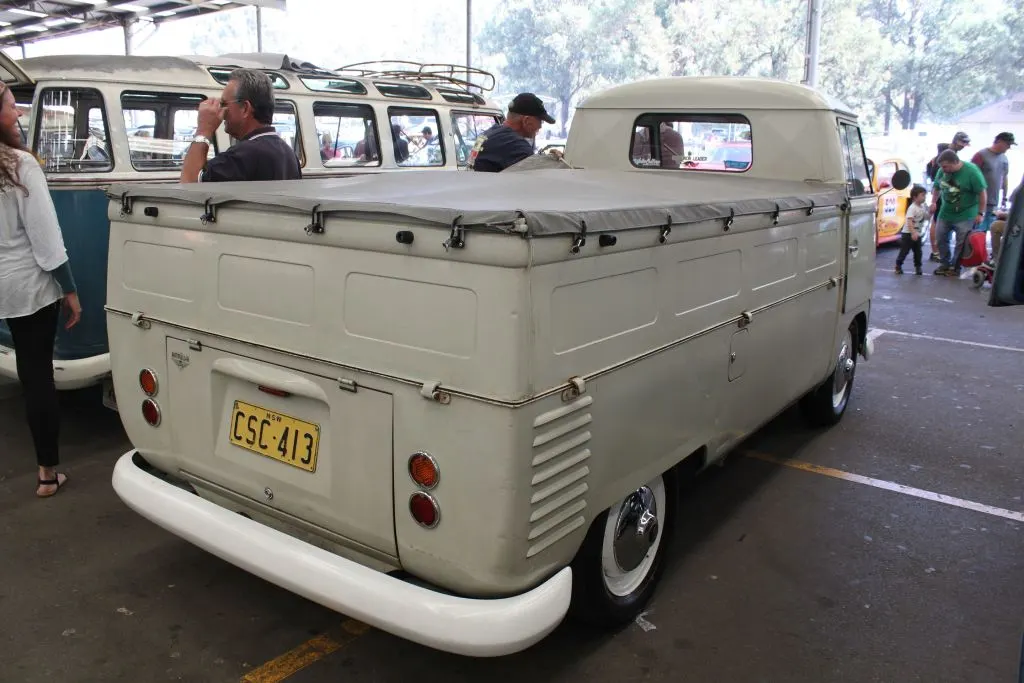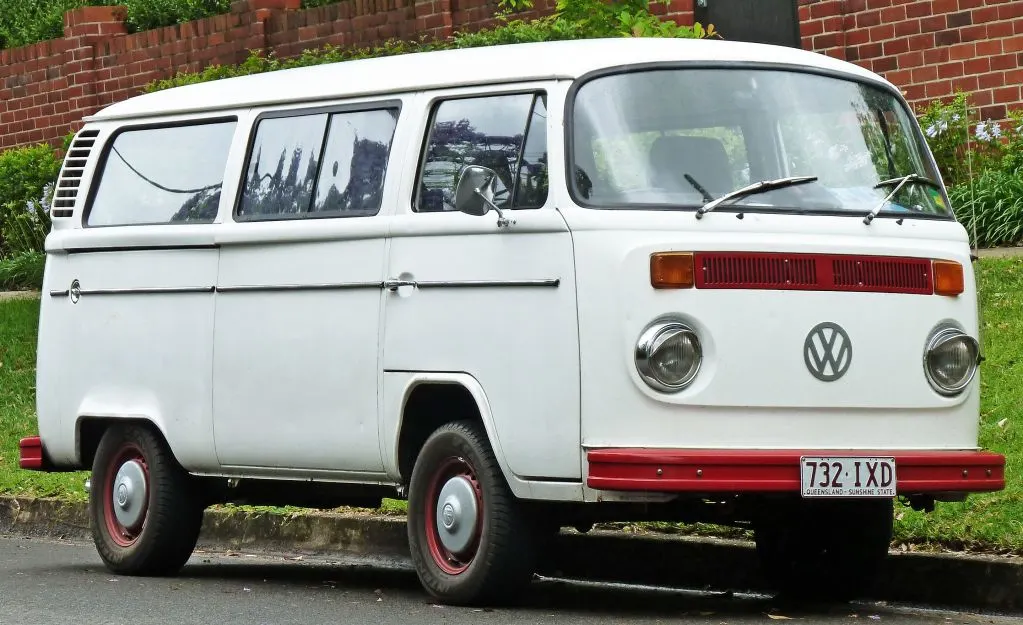The History and Future of Volkswagen Camper Vans
Volkswagen camper vans launched in 1950. This German company manufactured some of the most iconic camper vans in history.
So it’s no surprise the VW van has several famous pop-cultural references in music, movie, television, and video games. Some of the most notable include its association with The Grateful Dead, Woodstock, and Scooby-Doo.
It’s what helped many surfers catch their next waves and hippies get to their next concerts. It’s even what Steve Jobs sold to get money for his computer start-up that would later become Apple.
Let’s look at the past, and the future, of this iconic brand.

The 1940s — Camper Van Conception and Reveal
Volkswagen was founded in 1937 under the direction of Adolf Hitler as a state-owned automobile company. It was originally named “The People’s Car Company” and based out of Wolfsburg, Germany. Later, the company denationalized when it sold its stocks to the public.
Inside the VW plant, workers used a wagon apparatus to carry parts around while manufacturing their Type 1s, the VW Beetle. During a trip to the VW factory in 1947, Bernardus Marinus “Ben” Pon Sr. — who owned a dealership selling Type 1s in the Netherlands — saw the parts transporter. Inspired, Pon drew up sketches of the infamous van on a napkin and spawned the iconic VW in the process. After working with engineers, the company released the first model in November 1949.
The VW bus was the first commercial vehicle where the driver sat above the front wheels. It’s also known as the first van ever created.
The 1950s — The Early Years and Westfalia
The Volkswagen van went by the name Type 2, following in the footsteps of its Type 1 sibling, the Beetle. The first Type 2 model was the T1, produced from 1950 to 1967 (and in Brazil until 1975). This was a split-window model, known as the Splitty. It was formally named the Transporter, Microbus, or Kombi, meaning a combination motor vehicle. It had side windows and removable middle and rear seats.
In 1951, Volkswagen began contracting with Westfalia-Werke in West Germany to create camper conversions. You could purchase the converted Volkswagen camper vans from VW dealers worldwide. Or you could buy one through their Tourist Delivery Program, where you’d pick up the van in person, and then they’d ship it to your home.

A first of its kind, these campers, or “Westies,” had sleeping areas made out of foldout seats, interior birch panels, cabinets, an icebox, a sink with water storage, and electrical hookups. In addition, you could add options like the famous Westfalia pop-up top with canvas or screen sides or an awning or portable toilet.
The Volkswagen camper vans were first sold in the U.S. in the mid-1950s, and the Westfalia camper vans shortly after in 1956. People saw these camper vans as more affordable options to station wagons. And they offered a cheap way for the working-class to live, vacation, and travel all in one vehicle. Of course, it was also a hit for those seeking an alternative vehicle to the mainstream American market, especially those living on the fringe of society.
In 1956, after its first year of sales in the United States, VW sold 6,666 Transporters. In total, Volkswagen built more than 13 million VW vans, making it the “longest-produced model in automotive history.”
The 1960s — Introducing the T2 Camper Van
The 1963 T1 model featured the first sliding door for a passenger/cargo area instead of using hinged doors. In essence, this became what we now know as the first minivan.
From 1968 to 1979, Volkswagen produced the T2, also known as Bay, Bay-Window Microbus, or even Breadloaf. The Brazil plant manufactured this second-generation VW Transport line until 2013.
The T2 brought with it a bigger body, more power, and higher speeds. It went up to 80 mph rather than barely pushing 60 mph like the previous Volkswagen camper vans. One of the most noticeable changes was the removal of the split front windshield. Instead, the van featured a full bay window. It also included safety upgrades, like front disc brakes and upgraded battery and electrical systems.

The 1970s — T3 and an Upgraded Westfalia
VW made the T3 from 1979-1991. This third-generation model went by the nickname Vanagon in the U.S. since it was roomy like a van but drove like a station wagon. It was the same length and height as the T2 but wider and heavier. The body was more square with noticeably different tail lights. It featured a raised roof, which could be pop-up or fixed, a refrigerator, a sink, and a stove. And it had other amenities, like power steering, air conditioning, power locks, and electronic and heated mirrors.
There were two options for outfitting the T3 Westfalia: the Campmobile and the Weekender. The Campmobile featured an integrated kitchen with a three-way fridge, two-burner stove, stainless steel sink with onboard water supply, fold-down rear bench that converted to a bed, and pop-top with a fold-out bed. The Weekender had no fridge, stove, or sink but had a cooler and self-contained sink, plus two rear-facing seats behind the front seats.

The 1980s — Making Changes
The Vanagon received some upgrades in the 80s. First, in 1981, Volkswagen introduced water-cooled diesel engines, and in 1984, they replaced all air-cooled engines with water-cooled gasoline boxer engines. Then, in 1985, the company came out with the T3 Syncro, the first four-wheel-drive model. And they offered a turbo-diesel option for the 1.6 L trim.
VW lowered the engine in the T3 Vanagon, which provided more livable space inside the van. And the rear door was considerably larger than that of the T2. Starting in 1988, Westfalia campervan conversions started going by the name California, yet these models were never sold in the United States.
The 1990s — Introducing the T4 Camper Van
From 1990 to 2003, VW manufactured their T4 line, also known as the EuroVan. The EuroVan made its debut in the U.S. in 1993 and was a front-engine model, rather than having an engine in the back like the previous lines. It featured front-wheel drive with a water-cooled, fuel-injected engine.
You could get the EuroVan with a “Weekender package” option, which came with the Westfalia-installed pop-top. Or you could get a EuroVan in the U.S. with a full camper conversion. Winnebago, not Westfalia, completed these full conversions starting in 1995.
The 2000s — T5 and T6
In 2001, DaimlerChrysler bought out Westfalia, so Volkswagen began converting their campers in-house. In 2003, Volkswagen launched their in-house version of the California, though they never sold it in the U.S.
Another model not sold in the United States was the fifth generation van. Volkswagen manufactured the T5 from 2003 to 2015. It had a more aerodynamic design than its predecessors. It also features a four-piece front grill.
The sixth-generation T6 launched in 2015 and featured a six-cylinder diesel engine. It has eight times the horsepower of the original Type 2, and there are some exterior changes to the tailgate and nose. Unfortunately, the T6 also isn’t for sale in the United States.
The Future — Electric and Self Driving
In 2017, Volkswagen revealed a concept for an all-electric van called the I.D. Buzz. The Volkswagen I.D. Buzz Microbus will come to the U.S. in 2023. Inspired by their iconic Type 2 Microbus, this all-electric powertrain can get you 300 miles of driving on a charge and recharges to 80 percent in just 30 minutes. According to VW, it uses a Modular Electric Drive kit, “a group of components and chassis parts engineered to maximize the potential of electric drive and future technology.”
The modern and inspiring I.D. Buzz comes with three rows of flexible seats, a front trunk like the original Beetle, and a fold-away steering wheel. The original Type 2 had 30 horsepower, but the new I.D. Buzz will have 369 HP. One day all too soon, this van might even drive itself using VW’s fully automated “I.D. Pilot.” It starts at just $40,000.
Freedom is a Volkswagen Camper Van
The Volkswagen Microbus has been an iconic piece of American culture for more than seven decades. Volkswagen has set the bar for vans and camper vans, and now they’re making waves in setting the bar for electric-camper vans. Where the original T2 Volkswagen camper vans stood for freedom, the seventh generation is about to usher in a new level of freedom with the all-new electric and self-driving I.D. Buzz. Have you caught onto the Volkswagen camper van train yet?
We’ll Help You Find the Best Free Camping in the USA
You should give it a try!
As a matter of fact, these free campsites are yours to enjoy. Every time you pay federal taxes, you’re contributing to these lands.
Become a FREE CAMPING INSIDER and join the 100,000 campers who love to score the best site!
We’ll send you the 50 Best Free Campsites in the USA (one per state). Access the list by submitting your email below: